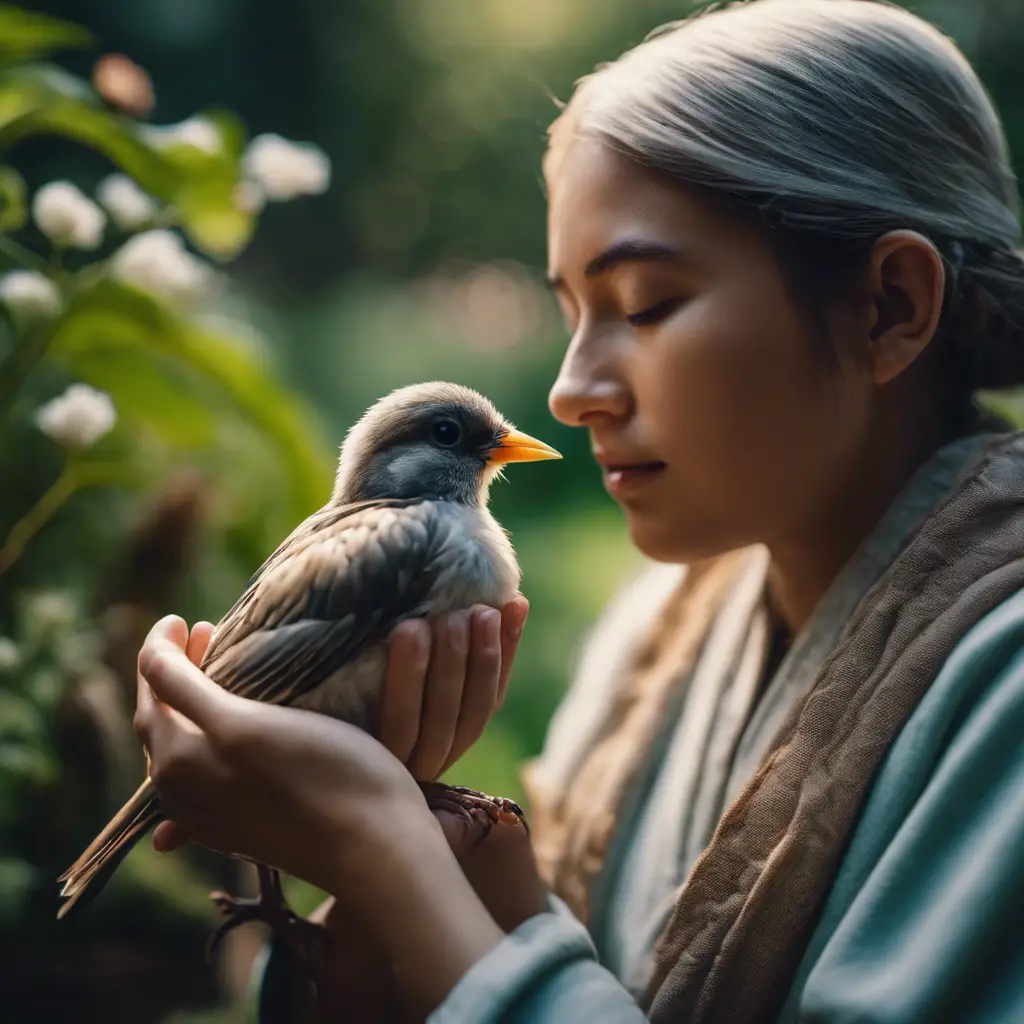As an ornithologist with years of fieldwork, my experience observing injured birds has profoundly shaped my understanding of their capacity for pain. I believe that their reactions to injury—withdrawal, vocalization, and physiological stress indicators—mirror the pain responses in mammals.
Once, while rehabilitating an injured sparrow, I was struck by its pained chirps and the way it cradled its wing. This encounter reinforced my view that birds do indeed feel pain.
Through my expertise, I’ve come to recognize the moral imperative to consider their welfare and advocate for their protection in both natural and human-altered environments.
Key Takeaways
- Birds possess nociceptors and exhibit behavioral and physiological changes that indicate pain.
- Assessment tools such as visual analog scales and numerical rating scales can help determine the need for pain interventions in birds.
- Ongoing research aims to further understand avian pain and refine pain management techniques.
- Ethical considerations regarding bird welfare and pain relief are crucial in various human activities involving birds.
Avian Pain Perception

Recognizing that birds possess nociceptors, it’s clear that they’re equipped to experience pain much like mammals do. These specialized nerve endings are integral to the avian pain perception, signaling distress through their nervous systems.
You can observe signs of pain in birds through behavioral changes such as altered vocalization, posture, appetite loss, and shifts toward aggression or fearfulness. Physiological measures, including fluctuations in heart rate, respiration, body temperature, and stress hormones, provide further insight into the pain experience of avian species.
Understanding these indicators is crucial for effective pain management in birds, as it informs interventions to alleviate discomfort. This knowledge also influences the setting of pain thresholds and ethical considerations in both domestic and wildlife contexts, emphasizing the importance of acknowledging that birds feel pain.
Indicators of Pain in Birds

Building on the established understanding that birds possess the physiological means to experience pain, it’s important to consider the specific indicators that reflect their discomfort. You must recognize that birds experience pain through both behavioral and physiological responses. Signs of discomfort may include changes in vocalization, posture, movement, appetite, aggression, or self-mutilation. Since birds naturally hide their pain, responding to painful stimuli in a less overt manner than other animals, careful observation is crucial.
Assessment tools, such as visual analog scales or numerical rating scales, have been adapted for avian analgesia. These tools, along with the understanding of pain receptors, help determine the need for interventions like non-steroidal anti-inflammatory drugs.
Research on Avian Pain

While birds have long been recognized as sentient beings capable of feeling pain, recent studies employing advanced methodologies have deepened our understanding of how avian pain is perceived and processed. You’ll find that these investigations reveal:
- Neurologic Components: Birds possess complex nervous systems with nociceptors that detect pain, similar to mammals.
- Signs of Discomfort: Researchers observe birds’ behavior for changes such as vocalization and altered posture, indicative of pain perception.
- Pain Assessment Tools: Pain assessment in birds involves monitoring physiological indicators and evaluating responses to analgesic drugs.
- Research and Field Studies: Ongoing studies aim to refine our insight into how birds experience and perceive pain, ensuring more accurate pain management.
This research underscores the necessity for ethical considerations regarding birds’ well-being in various human activities.
Bird Welfare and Treatment

Having established that birds experience pain with a sophistication similar to mammals, we must now consider the implications for their welfare and the treatment they receive in various human contexts. Recognizing signs of distress is vital for providing immediate pain relief and addressing discomfort due to environmental factors or potential chronic pain conditions. Avian veterinarians play a crucial role in diagnosing animal pain and prescribing treatments that may include protective behaviors.
| Aspect | Implication | Response |
|---|---|---|
| Agricultural Practices | Potential for chronic pain | Implement humane methods |
| Scientific Research | Ethical necessity for pain relief | Strict welfare protocols |
| Recreational Interaction | Discomfort from mishandling | Educate handlers on bird welfare and treatment |
A scientific and analytical approach demands that we prioritize bird welfare, ensuring their treatment reflects their capacity for pain.
Frequently Asked Questions
Do Birds Suffer Pain?
You’re asking if birds suffer pain. Scientifically, yes, they do. Birds exhibit distress through behavior changes and physiological signs, indicating a capacity for pain similar to mammals, including complex emotional responses.
How Do You Know if a Bird Is in Pain?
You’ll notice a bird’s pain through behavior changes like reduced appetite, aggression, or fearfulness, as well as physical signs like fluffed feathers, closed eyes, or injuries. Monitor for physiological changes such as altered heart rate.
Do Birds Feel Pain When Their Feathers Are Plucked?
Yes, you should understand that birds do feel pain when their feathers are plucked, as they have pain receptors similar to those in mammals and show clear signs of distress and discomfort.
Can Birds Scream in Pain?
You might observe birds screaming when in distress, which can be a response to pain, as they’re equipped with nociceptors that allow them to react to painful stimuli, just like mammals do.
Conclusion
In conclusion, you’ve learned that birds possess the neurological apparatus necessary to experience pain akin to mammals. They demonstrate clear indicators of distress, prompting behavioral adjustments.
Ongoing research continues to refine our understanding of avian pain perception, underscoring the importance of recognizing and alleviating pain for bird welfare.
Your awareness and action are crucial in ensuring humane treatment and improving our feathery friends’ quality of life.

An avid ornithologist, zoologist and biologist with an unwavering passion for birds and wild animals.
Dr. Wilson’s journey in ornithology began in childhood and led him to obtain a Ph.D. in Ornithology from the prestigious Avian Research Institute. He has worked closely with renowned experts in the field and conducted extensive research and field studies globally.




